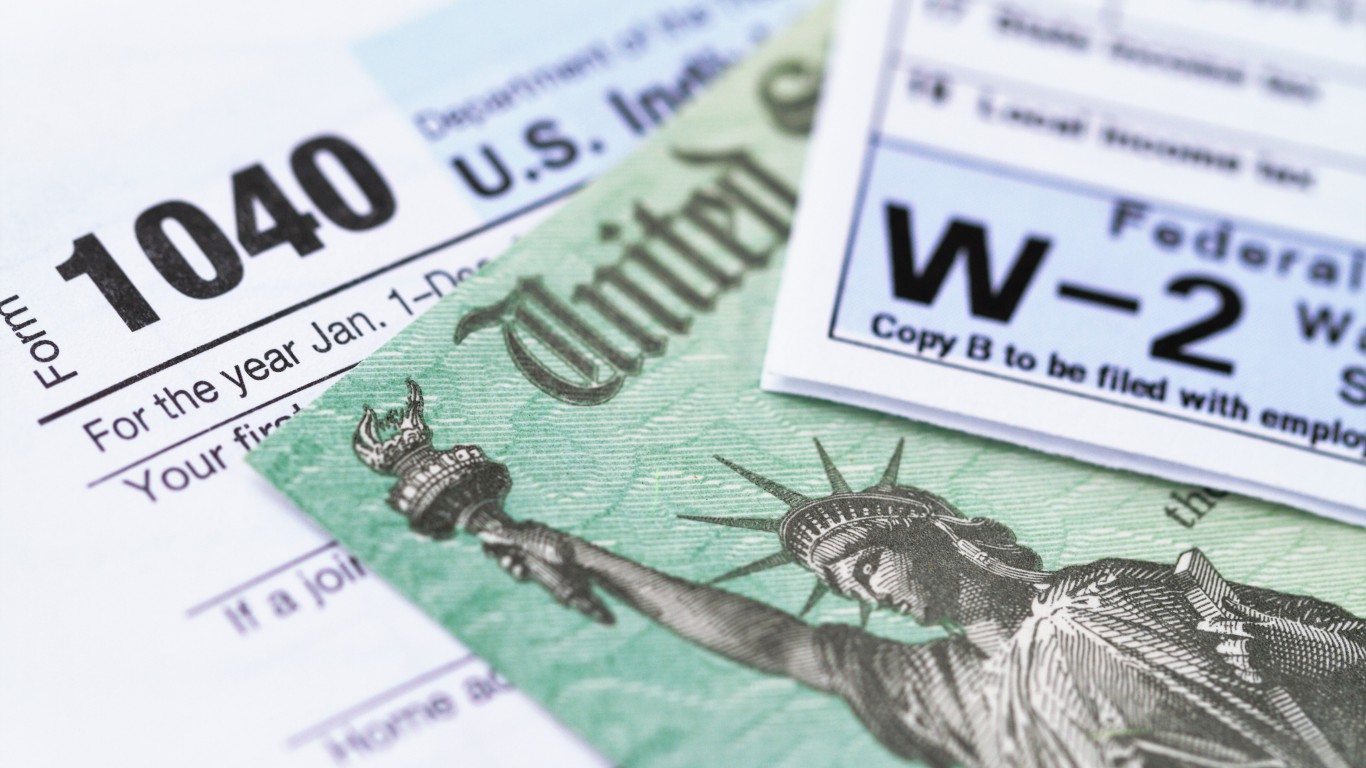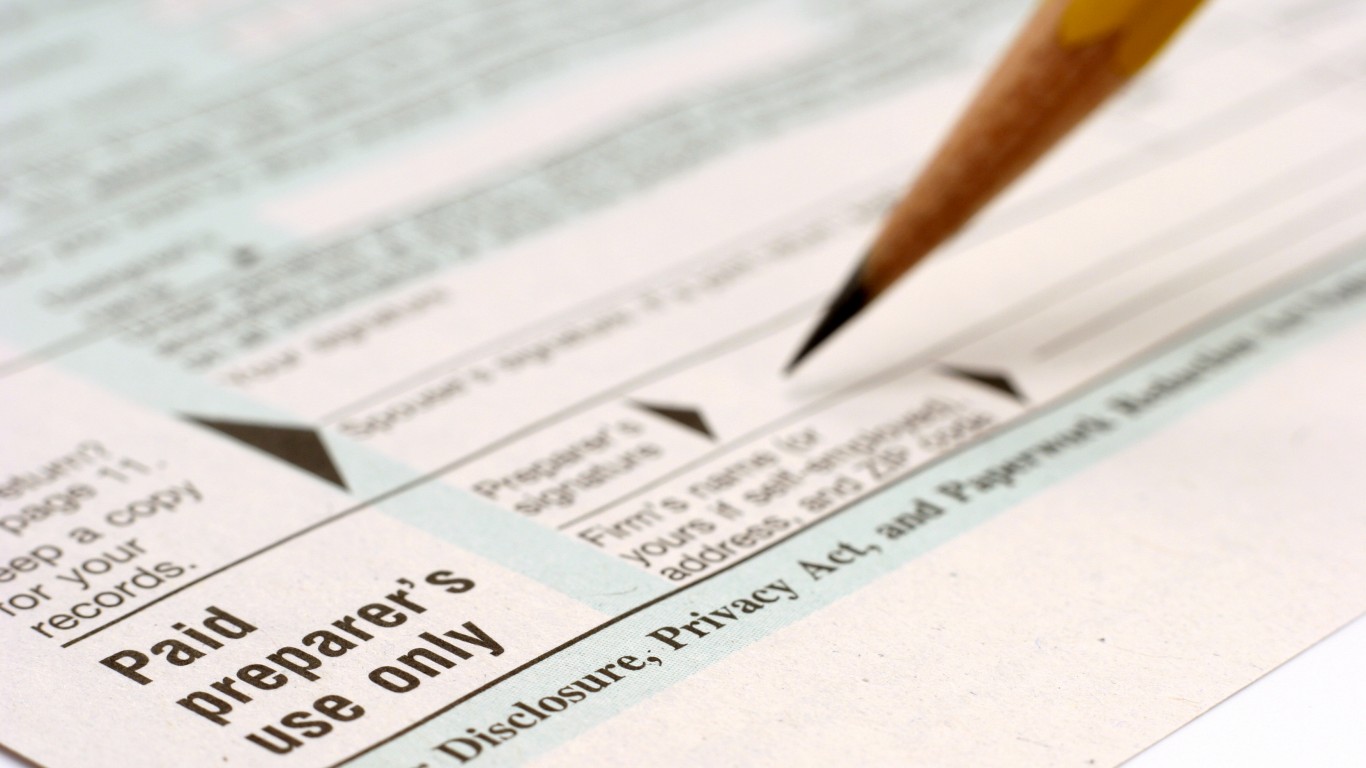Special Report
Tax Brackets Are Changing in 2024: Here Is What You Will Be Paying

Published:

It’s safe to say that life has been increasingly difficult for middle- and low-income Americans for the past few years. Inflation combined with rising costs of living, high interest rates, higher rents, companies of all industries raising their prices, and more has combined to squeeze American families for all their hard-earned money. Thankfully, the IRS has opted to alleviate some of the pain. Two ways they can do this is by raising the tax brackets across the board and increasing the standard deduction.
How much this increase will affect you will depend on a few factors. Those in lower tax brackets will definitely feel the change the most. While tax season is still a few months away, this should come as welcome news to families that are struggling to make ends meet. But no matter what tax bracket you fall into, you will see some change in your returns this year. Most likely, that change will be lower taxes. So, how much have the brackets changed, and how will they affect you?
The IRS adjusts the tax brackets on a pretty regular basis to account for inflation and other significant economic factors. However, because inflation has been much higher than usual, the IRS has decided to make the adjustments bigger than usual.
The changes for the 2023 tax year were the largest in a long time, at a 7% increase for all brackets. But this year is still significantly higher than normal increases at 5.4%. This helps prevent something known as “bracket creep”. Bracket creep occurs when inflation pushes taxpayers into higher tax brackets, causing them to pay more in tax, even though they have had no increase in income or purchasing power.
The IRS made the announcement this month on November 10. They will increase the bracket at each level, so everyone will see some change to their returns. They also broadened the range of each bracket set by the 2017 Tax Cuts and Jobs Act.
Our tax brackets are progressive. While the amount to qualify for each level has increased, the taxable rates for each bracket remain unchanged. These tax rates are determined after subtracting any deductions from your total income. These tax rates are unchanged at 10%, 12%, 22%, 24%, 32%, 35%, and 37%.
What does it mean that brackets are progressive? Let’s say, for example, that after all your deductions, your taxable income is $50,000. That would put you in the third tax bracket of 22%. But not all of your income is taxed at that rate, that would be a flat tax rate. With a progressive tax, your first $11,601 is taxed at the lowest bracket of 10%. Then the next bracket would tax the next $35,550 at 12%. Whatever is left would be taxed in the third bracket at 22%.

Tax brackets change depending on your personal living situation. If you are married, single, a caretaker, or something else, your tax situation will change. We have included the most common filing situations below. Keep in mind that the IRS sets only the Federal Income Tax brackets. Your state and local taxes are set by your state and local governments. They will be unaffected by the IRS rates.
If you are married with or without children, this will be your bracket if you and your spouse want to file only once every tax year. Your incomes, expenses, and deductions are combined.
| Tax Rate | Married Filing Jointly Taxable Income Range |
|---|---|
| 10% | $0 to $23,200 |
| 12% | $23,201 to $94,300 |
| 22% | $94,301 to $201,050 |
| 24% | $201,051 to $383,900 |
| 32% | $383,901 to $487,450 |
| 35% | $487,451 to $731,200 |
| 37% | $731,201 or more |
If you are single with no spouse, you will file as an individual.
| Tax Rate | Individual Taxable Income Range |
|---|---|
| 10% | $0 to $11,600 |
| 12% | $11,601 to $47,150 |
| 22% | $47,151 to $100,525 |
| 24% | $100,526 to $191,950 |
| 32% | $191,951 to $243,725 |
| 35% | $243,726 to $609,350 |
| 37% | $609,351 or more |
If you are married but want to file separate returns this year, your taxable range looks similar to an individual until you reach the higher brackets. At this level the income range is lower than an individual accounting for the potentially higher earning and lower expenses for a married couple compared to two individuals.
| Tax Rate | Married Filing Separately Taxable Income Range |
|---|---|
| 10% | $0 to $11,600 |
| 12% | $11,601 to $47,150 |
| 22% | $47,151 to $100,525 |
| 24% | $100,526 to $191,950 |
| 32% | $191,951 to $243,725 |
| 35% | $243,726 to $365,600 |
| 37% | $365,601 or more |
To file as a head of household you must be unmarried and have another dependent that you support in your home. This can be a child or other family member who does not work or cannot file their own return. Their brackets are much higher to account for the fact they have to support one or more other individuals that aren’t contributing to the income of the home.
| Tax Rate | Heads of Household Taxable Income Range |
|---|---|
| 10% | $0 to $16,550 |
| 12% | $16,551 to $63,100 |
| 22% | $63,101 to $100,500 |
| 24% | $100,501 to $191,950 |
| 32% | $191,951 to $243,700 |
| 35% | $243, 701 to $609,350 |
| 37% | $609,351 or more |

In addition to increasing the limits to qualify for the next tax bracket, the IRS also increased the standard deduction. The standard deduction is just that, it is a deduction everyone can apply to their taxes instead of itemizing all their transactions for the year and deducting all applicable expenses. In theory, this is meant to save people time and money on their taxes by anticipating how many deductible expenses the average American has each year. It also increases the number of returns the IRS can process by making each return simpler and smaller.
The standard deduction has increased regularly over the last few years, with the largest jump in 2022. The 2024 tax season continues the trend of large increases.
The standard deduction for 2024 will be $29,200 for married couples filing jointly. This is a $1,500 increase from the 2023 standard deduction of $27,700. For individuals, the new standard deduction is $14,600. This is a $750 increase from the 2023 deduction of $13,850.
If you file as a head of household, your standard deduction is now $21,900. This is $1,100 more than the previous deduction of $20,800.

Unless you prepare your own taxes (a rare thing with America’s complicated tax system) you won’t need to do anything during tax season to qualify for the new rates or apply the standard deduction. You don’t need to know which bracket you fall into if you use a tax preparation service or website to file your taxes. But this is useful information to anticipate how much tax you might owe next year.
The current rates are only temporary. As usual, the complicated nature of the U.S. tax system is always changing. The current rates that took effect in 2018 are set to change once they expire in 2026. At that point, the rates will increase to 10%, 15%, 25%, 28%, 33%, 35%, and 39.6% for each bracket respectively. These rate increases will harm lower-income Americans when or if they replace the current ones. This is because every percentage increase for lower brackets causes poor American to pay a larger share of the money they depend on than wealthier Americans. Lawmakers can repeal or replace the rate increase, but we won’t know of any solid plans until after the 2024 election.
If inflation continues to stay high and the costs of living continue to increase, we can expect the tax brackets to rise next year as well. It might not fix the problem, but it certainly helps struggling families.
Thank you for reading! Have some feedback for us?
Contact the 24/7 Wall St. editorial team.